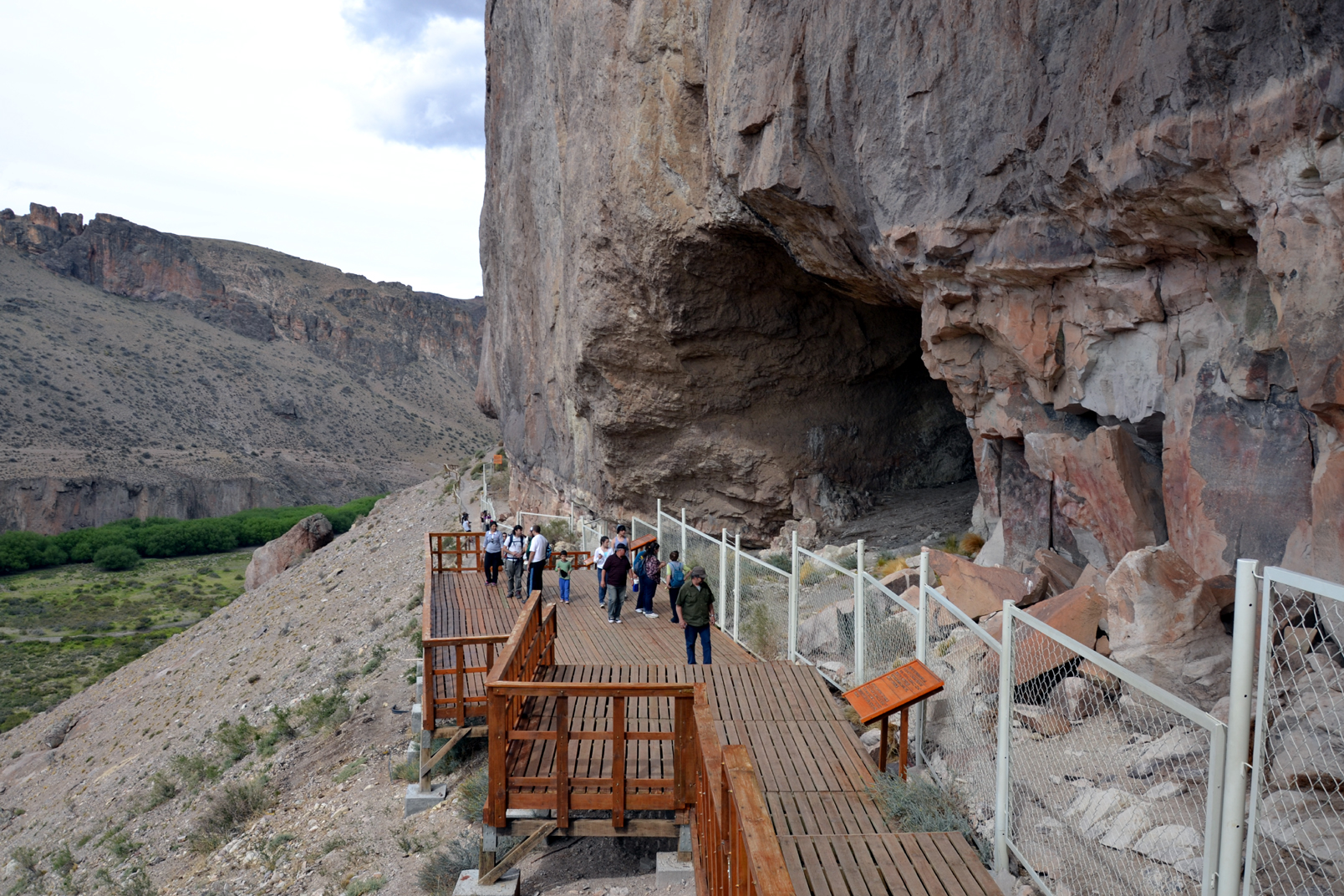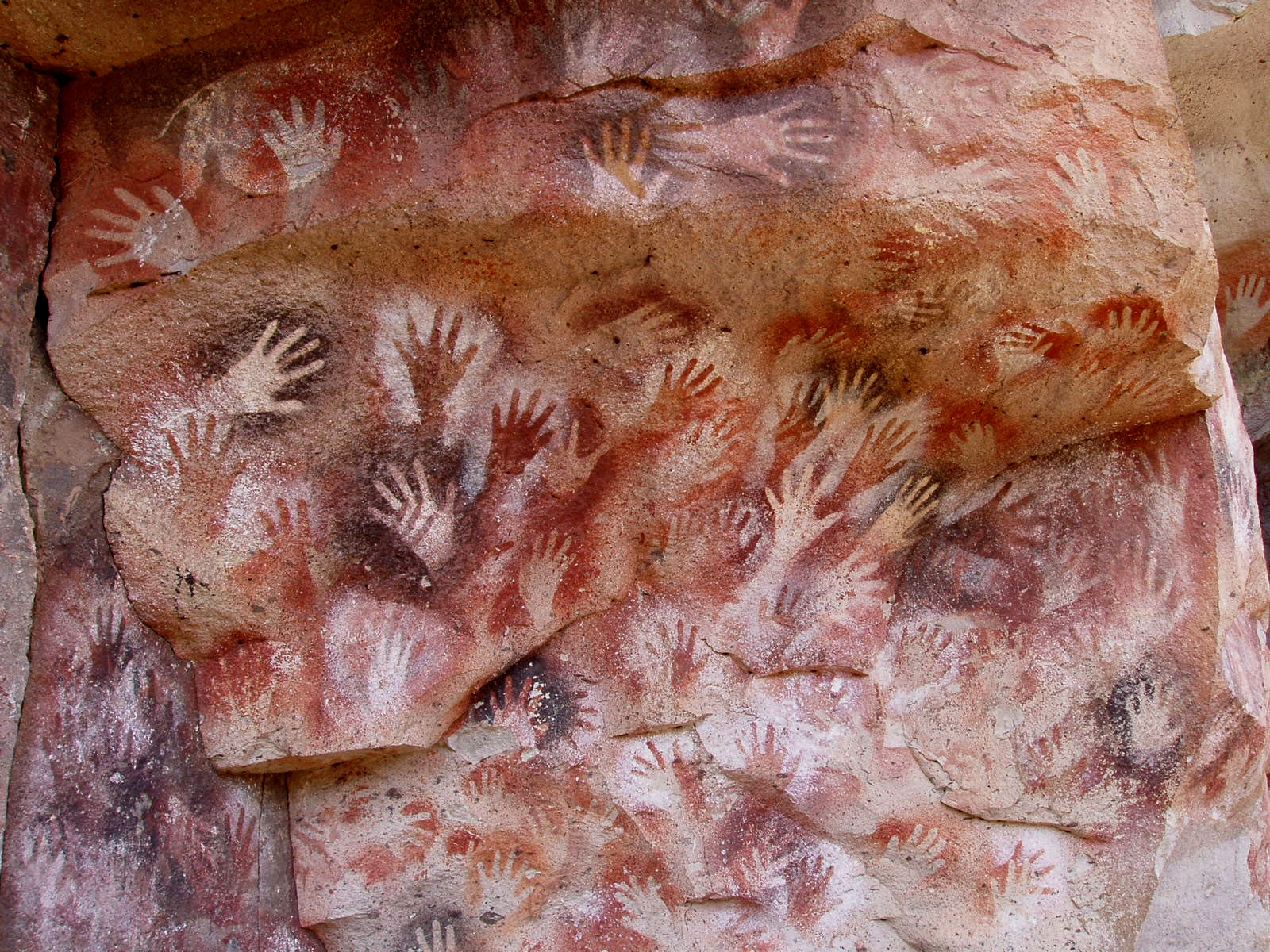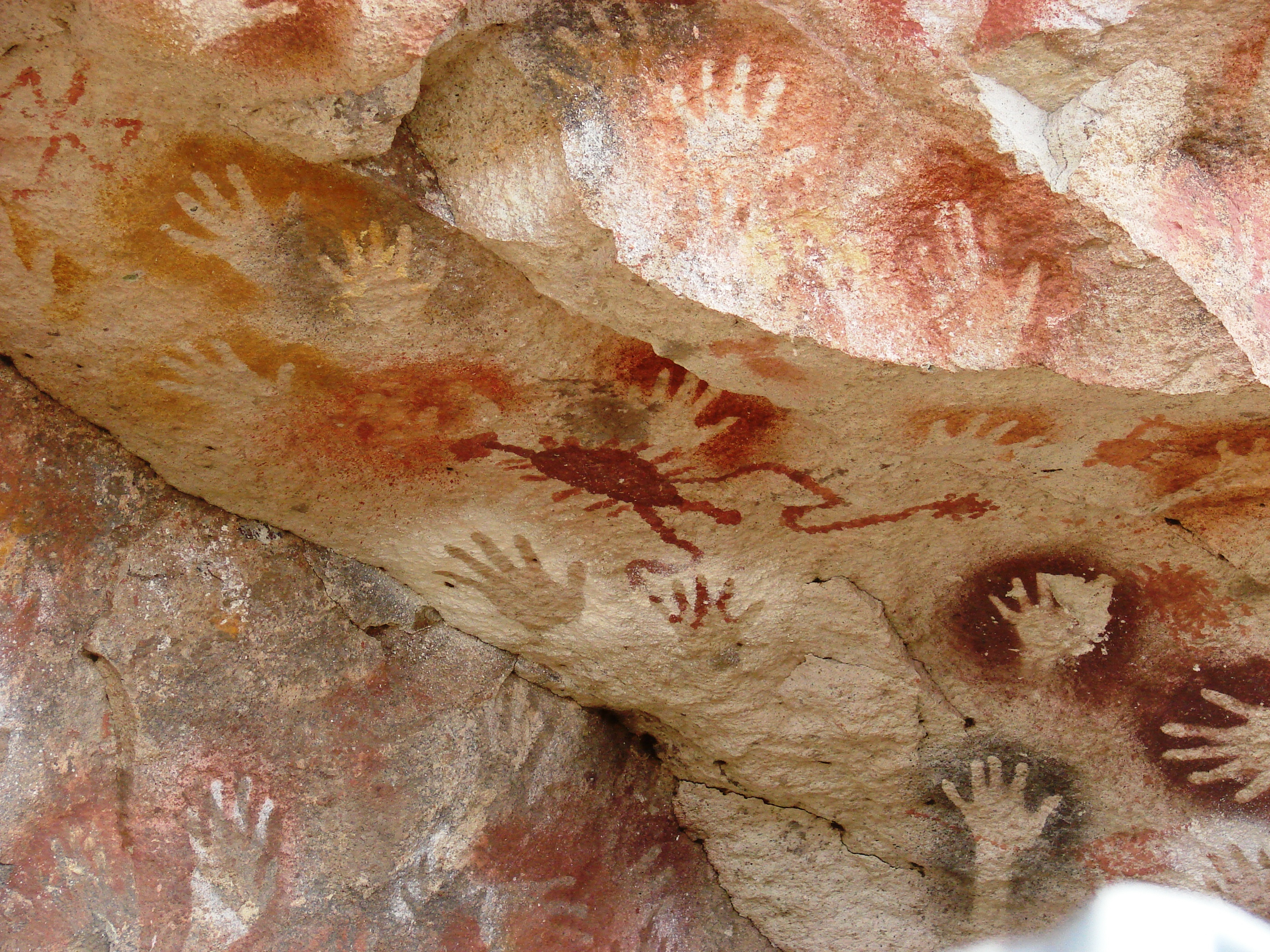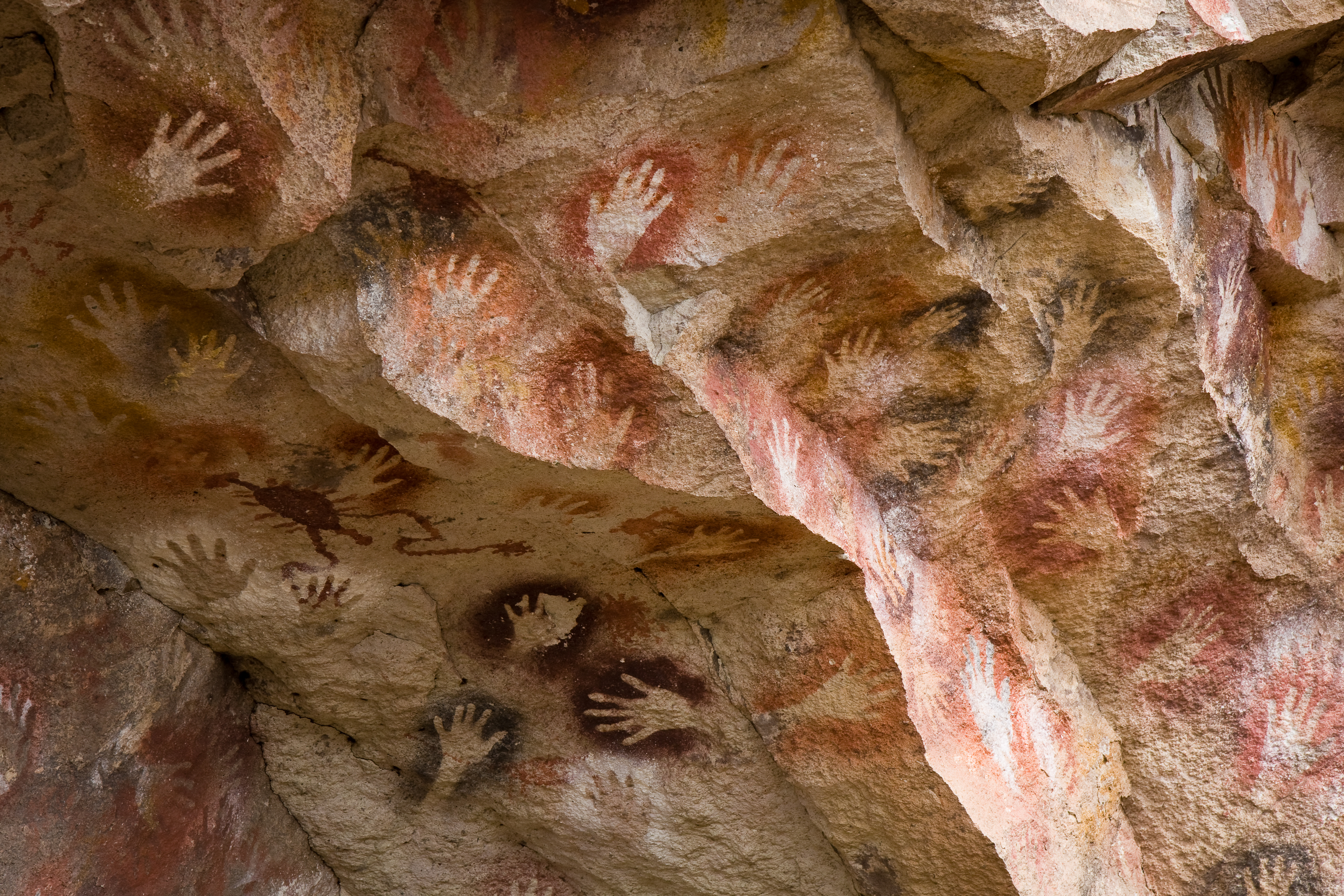Another one you need to see to believe: Cueva de las Manos, better known as The Cave of Hands in Patagonia, Argentina. Walls of the cave are inscribed with stencils of human hands from 13,000 to 9,500 years ago. It’s an astonishing work of art with so much to see, which is why it’s been a site for archaeological research for more than 25 years.

Apart from the hand stencils, there are also drawings of just the feet of the American ostrich, called “nandu”. Cave-dwellers made these inscriptions using bones carved into pipes, with yellow, red and orange ground pigments inside them to spray paint the walls. Based on the hand sizes, archeologists have also concluded that the artwork is the clever work of pre-teen boys. That’s impressive stuff!
A walk further into the prehistoric home reveals paintings of undecipherable objects, along with known ones like puma paws, scorpions and even evil spirits. Also on the cavewalls are tales of hunting strategies used by the cavemen, including man-made traps and weapons used. Repeated plenty is the guanaco, a llama-like animal that was easy target in the valley. Naturally, tourists are discouraged from touching the art as it might ruin the work over time.


Art doesn’t always need a reason or have meaning, but this one does. Hunters from this era would pass through the valley as they followed the tracks of their prey, staying inside the caves at night. These works of art are all marks of their existence so to say “I’ve been here”.
Planning a visit to Patagonia? The best time to see the cave is during spring or summer but be careful not to wander off to the restricted areas. We couldn’t tell you whats in there.






